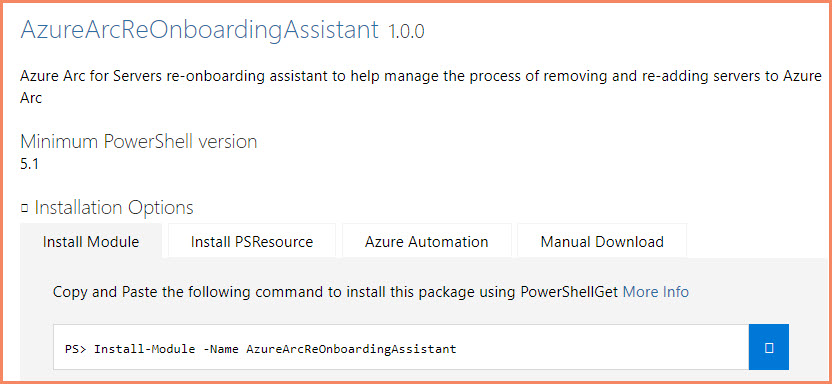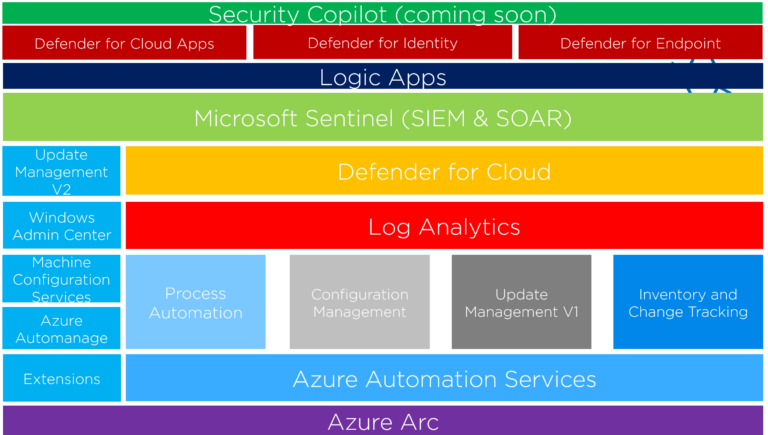Introduction
You’re sitting at your desk, staring at your screen in disbelief. Your Azure Arc-enabled server is acting up. Extensions won’t update. PowerShell commands are useless. The Azure portal? It might as well be a brick wall.
Sound familiar? If you’re nodding, you’re not alone.
The Dreaded Realization
As the reality sinks in, your heart rate quickens. You know what’s coming. The nuclear option: deleting the Azure Arc object and starting from scratch.
But then the questions start flooding in:
- What about all those data collection rules you’ve set up?
- The endpoints you’ve carefully configured?
- Those tags carrying critical info about maintenance windows?
Group memberships? - And let’s not forget about all those extensions.
It’s enough to make you want to crawl under your desk and hope it all goes away.
The Gap in the System
Microsoft’s go-to advice? “Use Azure Policies.” Sure, that helps with some things. But what about those tags with valuable information feeding into your maintenance configurations?
There’s been a hole in handling these scenarios. A big one.
A New Solution Emerges
That’s where the Azure Arc Re-Onboarding Assistant comes in. It’s not just a tool; it’s a lifeline when things go south.
Here’s what it does:
- Snaps a picture of your server’s current setup
- Walks you through manually offboarding the server
- Waits patiently while you re-onboard
- Jumps in to restore your previous configuration
In this example, we’re dealing with a server named MACHINECONFIG. The tool kicks into gear, saving all the critical info to a JSON file. It even makes a backup copy, just in case.
As you manually offboard the server (some things still need that human touch), the tool stands by, ready for what’s next. Once you’ve brought the server back into the fold, it springs back to life, restoring tags, data collection associations, and even noting that the AgentConfigurationConfigMode configuration on the machine.
The end result? A server that’s back online with all its previous settings, minus the headache of rebuilding everything by hand.
Understanding the Backup Files
The Azure Arc Re-Onboarding Assistant creates two JSON files during its operation:
- Master Backup File: [SubscriptionId]_[ServerName]_info_master.json
- This file is created only once, during the first run.
- It serves as the original, untouched backup of your server’s configuration.
- Use this file if you need to revert to the very first saved state.
- Current Backup File: [SubscriptionId]_[ServerName]_info.json
- This file is created or overwritten with each run of the tool.
- It represents the most recent backup of your server’s configuration.
- Useful for tracking changes over time or reverting to a recent state.
What Does It Restore?
Currently, the Azure Arc Re-Onboarding Assistant restores:
- Tags
- Data Collection Rule Associations
- Data Collection Endpoint Associations
It also notes the AgentConfigurationConfigMode.
Examples
Here’s how you can use the tool:
Full offboarding and re-onboarding process:
Invoke-AzureArcNodeOffboarding -ServerName SERVER1 -ResourceGroupName "MYARCSERVERS" -SubscriptionId "XXXXXXXXX" -OutputLocation "C:\AzureArcServerBackups"
Restore-only operation using a specific backup file:
Invoke-AzureArcNodeOffboarding -ServerName SERVER1 -ResourceGroupName "MYARCSERVERS" -SubscriptionId "XXXXX" -RestoreOnly -RestoreFile "C:\AzureArcServerBackups\XXXXXXXX_SERVER1_info_master.json" -OutputLocation "C:\AzureArcServerBackups"
Install-Module -Name AzureArcReOnboardingAssistant
A Word of Caution
This tool is for experienced users only. You should be well-versed in Azure Arc, PowerShell, and Azure server management before using it. Mistakes can cause data loss or server problems. Always back up your data and fully understand what re-onboarding does before you start.
Call to Action
If you’re an experienced Azure administrator facing the challenges of Arc-enabled server re-onboarding, give this tool a try. We welcome your feedback and suggestions for improvements. Remember, this is just the first release, and we’re keen to evolve it based on real-world usage and requirements.







